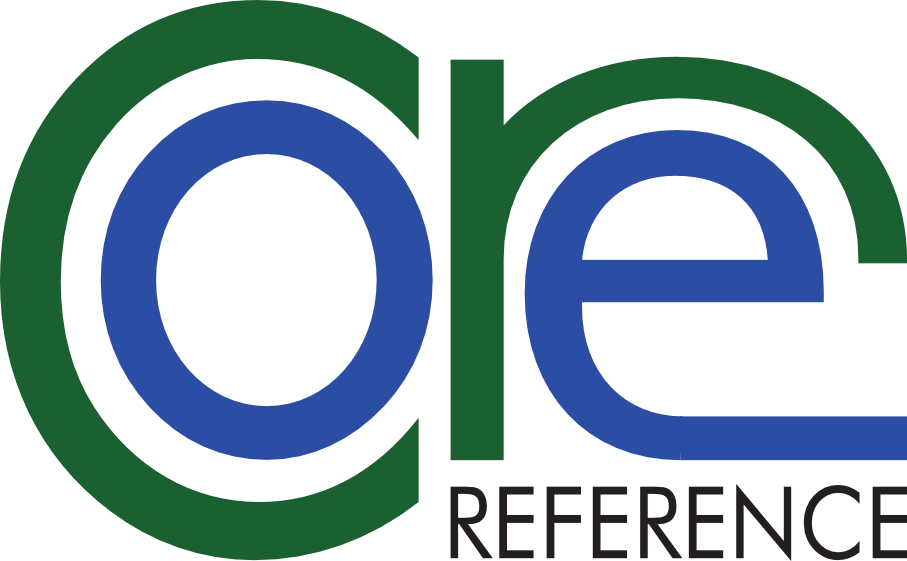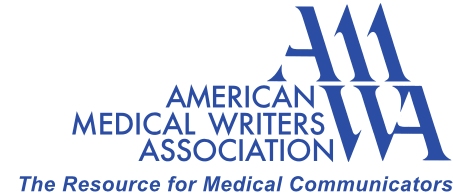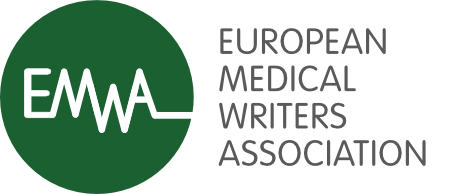October 2022
Medicines and Vaccines
ICH
ICH E19 Guideline “A Selective Approach to Safety Data Collection in Specific Late-Stage Pre-Approval or Post-Approval Clinical Trials'' reached Step 4 and was adopted on 27 September 2022. This guideline is intended to provide internationally harmonised guidance on the use of selective safety data collection that may be applied in specific late-stage clinical trials that may be pre-approval or post-approval.
ICH has released a Step 2 draft guideline outlining a harmonised template for clinical trial protocols to support consistent reporting among sponsors. The draft guideline, plus template and template technical specifications, were released for public consultation on 21 October. The scope of ICH M11 is to establish common instructions for placement of content and information on technical attributes. According to ICH “The guideline aims to have clinical trial protocol templates that are complete, free from ambiguity, well organised, and aligned with quality by design principles as set forth in other ICH guidelines.” The template has a core set of information for clinical trials including fonts that should be used in the protocols, numbering for tables and figures, as well as acceptable abbreviations. According to the ICH work plan (dated 24 Feb 2022) the consultation period is due to end in Feb 2023.
CTR and CTIS
- EMWA has published the eleventh issue of the 'Clinical Trials Highlights' newsletter, including details on a new document that provides CTIS users, sponsor and authorities, with an overview of the timelines and deadlines across the Clinical Trial Application process: CTIS Evaluation Timelines.
- The European Commission released the revised Q&As document on the EU CTR No. 536/2014 in September (Version 6.2). One new question on submitting patient-facing documents was added; two other Q&As were updated; Chapter 11 and Annex II were revised.
EU Regulatory
- EMA and Heads of Medicines Agencies (HMA) in EU Member States are progressing the agenda to increase access and improve quality of data that are core to the decision-making on the benefits and risks of medicines in the EU.
- The EU is seeing success in trial transparency, but some nations are holding back: six EU countries have successfully turned up the heat on sponsors who haven’t shared the findings of their clinical trials. But some member states still appear to be making little to no effort on trial transparency, threatening current efforts within the 27-nation trade bloc.
FDA Guidance and News
- The ‘Common Rule’ is a set of federal rules that protect people who participate in research. FDA intends to modernise oversight of clinical research and harmonise with the U.S. Department of Health and Human Service (HHS) Common Rule to make clinical trials more efficient and improve information for potential participants. to further harmonise clinical research regulations with the HHS Common Rule. They have proposed Rules on 28 Sep 2022 titled ‘Protection of Human Subjects and Institutional Review Boards’ and ‘IRBs; cooperative research’ Comments should be submitted by 28 Nov 2022.
- Draft guidance, “Ethical Considerations for Clinical Investigations of Medical Products Involving Children” has been issued by the FDA that provides an ethical framework for protecting children in clinical research, intended to assist IRBs, sponsors and industry.
- FDA released a final guidance entitled “Acute Myeloid Leukemia (AML): Developing Drugs and Biological Products for Treatment.” The guidance addresses FDA current thinking on the development program and clinical trial designs including indications limited to an individual phase of treatment (e.g., maintenance, transplantation preparative regimen, etc.).
- Draft guidance entitled “Characterizing, Collecting, and Reporting Immune-Mediated Adverse Reactions (imARs) in Cancer Immunotherapeutic Clinical Trials” has been published. The draft guidance covers cancer immunotherapeutic drugs that modulate the endogenous immune system and may disrupt immunologic tolerance to normal organs and tissues. Examples given include monoclonal antibodies, anticancer vaccines, and cytokines. The guidance provides recommendations on data to be collected and evaluated to assess whether adverse events qualify as imARs and the data on imARs that should be included in a new drug application (NDA) or biologics licence application (BLA).
- The FDA draft guidance entitled “Tissue Agnostic Drug Development in Oncology” has recommendations for tissue-agnostic cancer drugs that target specific molecular alterations across multiple cancer types. The guidance includes scientific considerations in determining when tissue agnostic oncology drug development might be appropriate, and highlights issues to be addressed during development including preclinical and clinical considerations (e.g., study design, statistical considerations, and endpoints).
- A trial design with multiple endpoints increases the likelihood of making false conclusions about a drug’s effects if appropriate adjustment for multiplicity is not in place. FDA released a final guidance entitled “Multiple Endpoints in Clinical Trials Guidance for Industry” to describe various strategies for grouping and ordering endpoints for analysis and applying some well-recognized statistical methods for managing multiplicity within a study in order to control the chance of making erroneous conclusions about a drug’s effects. The final guidance also incorporates a reference to the International Council for Harmonization’s (ICH) E9(R1) guideline on estimands and how these fit into primary and secondary endpoint families.
-
FDA released a final guidance entitled “Cancer Clinical Trial Eligibility Criteria: Available Therapy in Non-Curative Settings”. The guidance provides recommendations regarding the inclusion of patients who have not received available existing treatment options for their cancer in clinical trials for the treatment of cancer in the non-curative setting (i.e., when there is no potential for cure or prolonged/near normal survival).
EMA Guidance and News
-
The first release of the EU data quality framework for medicines regulation entitled “Data Quality Framework for EU medicines regulation” is open for public consultation:
- The scope of the DQF is “to provide a set of definitions, principles and guidelines that can coherently be applied to a wide range of data sources for the purpose of characterising and assessing data quality for regulatory decision making.”
- A webinar will take place on 18 October to present the draft framework to interested stakeholders and support the public consultation
- EMA released a report in September 2022 from a workshop held in July 2022 where invited stakeholders discussed the draft guidance on the protection of PPD and CCI for documents uploaded to CTIS and shared their experiences using the new system. The report summarises the major discussion points on CTIS functionalities, protection of PPD, and protection of CCI.
Real-World Data
- EMA have released a draft good practice guide for the use of the EU metadata catalogue of real-world data sources e.g. observational data stored in repositories such as electronic health records and disease registries. The focus is systematic integration of real-world evidence in medicines regulation. Draft recommendations are included for use of the EU metadata catalogue to identify suitable real-world data sources for studies, and to assess their suitability for use in a study protocol or referred to in a study report. Public consultation is open until 16 November 2022 via a template for comments.
- FDA has announced the Advancing Real-World Evidence (RWE) Program on 19 Oct 2022. The agency developed the program to improve the quality and acceptability of RWE-based approaches that can meet regulatory requirements in support of labelling for effectiveness (e.g., new indications, populations, dosing information) or for meeting post-approval study requirements.
Transparency and Disclosure Reources and News
- Open consultation: WHO ICTRP guidance for reporting summary results in clinical trial registries. There is substantial variation in the elements of summary results collected by trial registries. To promote harmonization, an ICTRP-led team has drafted recommendations for the minimum elements of study results that should be reported in trial registries. The purpose of this consultation is to solicit feedback from stakeholders - including researchers, patients, journal editors, funders, industry sponsors, and regulators - on key components of this draft guidance. The deadline for submitting feedback is 11 November 2022. Feedback can be submitted here.
- BMJ Open Access paper “Approach for reporting master protocol study designs on ClinicalTrials.gov: qualitative analysis” describes novel issues specific to the registration and reporting of results for master protocols and proposes an approach to support transparent, complete, and timely reporting to trial registries and results databases such as ClinicalTrials.gov, although the process has the potential to be applied broadly to other trial registries and results databases.
- European medical research funders are reportedly not taking adequate actions in ensuring grantees to register and report clinical trials in line with WHO best practices, resulting in research waste and publication bias. Bruckner et al. reported their findings in a manuscript entitled “Adoption of World Health Organization Best Practices in Clinical Trial Transparency Among European Medical Research Funder Policies”, published in JAMA in August 2022.
Development Strategy News
- Morga et al’s article
‘Is Intention to Treat Still the Gold Standard or Should Health Technology Assessment Agencies Embrace a Broader Estimands Framework? Insights and Perspectives From the National Institute for Health and Care Excellence and Institut für Qualität und Wirtschaftlichkeit im Gesundheitswesen on the International Council for Harmonisation of Technical Requirements for Pharmaceuticals for Human Use E9 (R1) Addendum’ reviews interpretation of estimands and whether the use of intercurrent events is a viable alternative to the long held ITT principles established in ICH E9. NICE and IQWiG hold differing opinions.
News from Asia Regulators
In the effort of aligning the technical standards of drug registration with the most recent international standards, China NMPA announced in August 2022 that as of 31 July 2023, clinical trials conducted in China shall comply with the ICH E8(R1) Guideline: General Considerations for Clinical Studies and E14 Guideline: The Clinical Evaluation of QT/QTc Interval Prolongation and Proarrhythmic Potential for Non-antiarrhythmic Drugs. The ICH E8 Guideline is currently in force in China.
Medical Devices
Medical devices information is kindly compiled by Raquel Billiones.
Updates in the EU
MDCG 2022-15 - Guidance on appropriate surveillance regarding the transitional provisions under Article 110 of the IVDR was released in September to appropriately address application of transitional provisions to devices covered by certificates according to IVD Directive. This guidance should be used in conjunction with other MDCG guidance docs.
More Notified Bodies (NBs) are added to the list in the European Commission’s NANDO system. There are now a total of 40 NBs listed, 7 of which also cover IVDs.
EU Glossary of Human-Centric Artificial Intelligence: Check out the European Commission’s Joint Research Centre (JRC) Science for Policy Report on Glossary of Human-Centric Artificial Intelligence. This glossary of over 200 terms focuses on a human-centric approach, and covers concepts related to trustworthy artificial intelligence such as transparency, accountability or fairness.
Updated MDR/IVDR Rolling Plan The MDR/IVDR rolling plan is updated regularly. Check out the October updates on essential implantation acts and initiative.
Updates from the Notified Bodies (NB)
Technical Documentation Guidance: Team-NB released the
Best Practice Guidance for the Submission of Technical Documentation under Annex II and III of Medical Device Regulation (EU) 2017/745. This document provides guidance on what is important to submit in your Technical Documentation and sets a common level of minimal expectations of NBs.
Transitioning to another NB: Need to change NBs? This position paper specifies the terms of a voluntary change of NB under Regulation (EU) 2017/745 or Regulation (EU) 2017/746 and can be used as a template.
Class D IVDs: Team-NB released a Position Paper on measures for Class D in vitro diagnostic devices (IVD) in the absence of EU Reference Laboratories. Class D IVDs are classified with highest risk and include IVDs that detect or are exposed to life-threatening transmissible agents or transmissible agents and infectious diseases with a high risk of propagation.
Updates from the US FDA
The US FDA released the Final Guidance for Industry on Electronic Submission Template for Medical Device 510(k) Submissions effective in October 2022. This guidance represents one of several steps in meeting FDA’s commitment to the development of electronic submission templates to serve as guided submission preparation tools for industry to improve submission consistency and enhance efficiency in the review process.
Breakthrough Devices: The FDA released the draft GfI on Select Updates for the Breakthrough Devices Program Guidance: Reducing Disparities in Health and Health Care this month. The updates aim to “clarify how the program may be applicable to certain devices that benefit populations impacted by health and/or health care disparities.
Postmarket Surveillance: The final GfI on Postmarket Surveillance Under Section 522 of the Federal Food, Drug, and Cosmetic Act was released in October. Postmarket surveillance is the active, systematic, scientifically valid collection, analysis, and interpretation of data or other information about a marketed device. The data collected under a surveillance order help to address important public health questions on the safety and effectiveness of a device.
Updates from Switzerland
Switzerland set up its own Swiss Database on Medical Devices (swissdamed), the equivalent to EU’s EUDAMED. Swissdamed comprises two linked modules (economic operators module and medical device module) and a public website. The aim is for equivalence between regulations in Switzerland and the EU, hence the swissdamed modules are set up to be similar to the corresponding EUDAMED modules. The go-live date is planned for 2023.
Updates from MHRA
UK Medical Device Regulations: The MHRA announced a 12-month extension to the implementation of the future Medical Device Regulations, with an aim to bring the new regulations into force by July 2024
Software and AI as Medical Device: The MHRA provided an update its Guidance on Software and AI as a Medical Device Change Programme – Roadmap.


